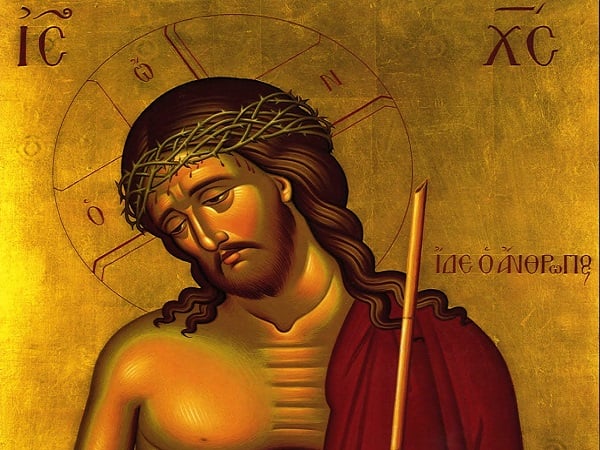The Forty Days
20 February 2018The two preceding Sundays, of the Last Judgment and of Forgiveness, together constitute – albeit in reverse order – a recapitulation of the whole range of sacred history, from its beginning point, Adam in Paradise, to its end-point, the Second Coming of Christ, when all time and history are taken up into eternity. During the forty days that now follow, although this wider perspective is never forgotten, there is an increasing concentration upon the central moment in sacred history, upon the saving event of Christ’s Passion and Resurrection, which makes possible man’s return to Paradise and inaugurates the End. Lent is, from this point of view, a journey with a precise direction; it is the journey to Pascha.+ The goal of our journey is concisely expressed in the closing prayer at the Liturgy of the Presanctified: ‘… may we come uncondemned to worship at the Holy Resurrection’. Throughout the forty days we are reminded that we are on the move, travelling on a path that leads straight to Golgotha and the Empty Tomb. So we say at the start of the first week:

Let us set out with joy…
Having sailed across the great sea of the Fast,
May we reach the third-day Resurrection of our Lord.
Let us hasten to the Holy Resurrection on the third day…
While our journey proceeds, as travellers we regularly call to mind how far we have progressed:
As we begin the second day…
Let us now set out with joy upon the second week of the Fast…
As we start upon the third week of the Fast, O ye faithful,
Let us glorify the Holy Trinity,
And joyfully pass through the time that still remains…
Weaving garlands for the queen of days
– the day, that is, of the Lord’s Resurrection. So we continue:
Now that we have passed beyond the middle point in the time of the Fast,
Let us hasten eagerly towards our journey’s end…
So may we be counted worthy to venerate the divine Passion of Christ our God,
And to attain His dread and holy Resurrection.
During each week of Lent, our faces are set towards the objective of our journeying: the Saviour’s suffering and triumphant Passover.
The forty days’ journey of Lent recalls in particular the forty years in which the Chosen People journeyed through the wilderness. For us, as for the children of Israel, Lent is a time of pilgrimage. It is a time for our liberation from the bondage of Egypt, from domination by sinful passions; a time for progress by faith through a barren and waterless desert; a time for unexpected reassurance, when in our hunger we are fed with manna from heaven; a time when God speaks to us out of the darkness of Sinai; a time in which we draw near to the Promised Land, to our true home in Paradise whose door the crucified and risen Christ has reopened for us.
The Weekdays of Lent
A characteristic ethos is given to the weekdays of Lent by the frequently repeated prostrations, used especially in conjunction with the Prayer of St. Ephraim, ‘O Lord and Master of my life…’.* Brief, sober, yet remarkably complete, this prayer takes us to the very heart of what Lent means.
Another distinctive feature of Lenten weekdays is the Liturgy of the Presanctified, celebrated according to present practice on each Wednesday and Friday, but at one time on every weekday of Lent. Strictly speaking, the term ‘Liturgy’ is a misnomer, for there is no Eucharistic consecration at this service; it is simply the office of Vespers, followed by the distribution of Holy Communion from elements consecrated on the previous Sunday. The full celebration of the Eucharist, being always a festive and triumphant event, is felt to be inconsistent with the austerity of the weekday Lenten Fast; and so already in the fourth century it was laid down that there should be no complete celebration of the Liturgy during Lent except on Saturday and Sunday.** But so as to enable the faithful to receive communion on weekdays in Lent – for in the ancient Church it was normal to communicate frequently, and in some places even daily – the order of the Presanctified Liturgy was devised.
Many moments in the Presanctified Liturgy recall the period when Lent was a time of final training before the reception of Baptism, the sacrament of light or ‘illumination’. Thus between the two Old Testament lessons, the priest, holding the censer and a lighted candle, blesses the congregation, saying: ‘The light of Christ shines upon all’; and, following the Litany for the Catechumens and their dismissal, there is during the second half of Lent an additional Litany ‘for those who are ready for illumination’. Each time we take part in the Liturgy of the Presanctified, we should ask ourselves: In a world that is increasingly alienated from Christ, what have I done since last Lent to spread the light of the Gospel? And where are the catechumens in our Orthodox churches today?
On Wednesdays and Fridays in Lent, as indeed throughout the year, the normal hymns to the Mother of God known as ‘Theotokia’ are replaced by ‘Stavrotheotokia’, that is, hymns referring both to the Cross and to the Theotokos, and describing the Mother’s grief as she stands beside the Cross of her Son. Through these hymns, we are made conscious of the Blessed Virgin’s participation in our observance of Lent.
+The phrase is taken from Schmemann, Great Lent, p. 11.
*On Saturdays and Sundays in Lent, when the strictness of fasting is relaxed, the Prayer of St. Ephraim is not said, nor do we make prostrations, but only low bows.
**Council of Laodicea, Canon 49. When the Feast of the Annunciation became fixed on 25 March, it was decided that the full Liturgy should also be celebrated on this day (Council in Trullo, Canon 52).






